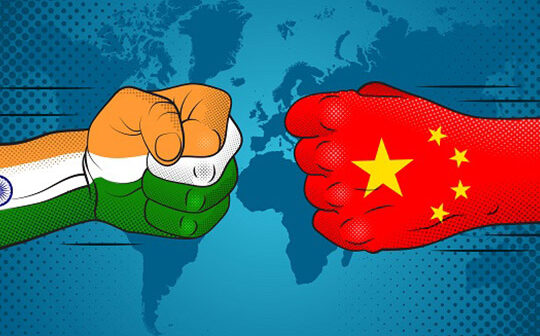
Written by Sarosh Bana.
While 17 corps commander-level talks have failed to dislodge the People’s Liberation Army (PLA) troops from the two “friction points” of Depsang and Demchok they have occupied in India’s border territory of Ladakh since early 2020, New Delhi is now striving to address a new mode of intrusion by China.
Pushed on the backfoot by a belligerent China, the Narendra Modi government has set about drafting a framework of basic protocols to tackle these emerging threats held out by surveillance balloons and other unidentified objects in the sky, after one such contraption was spotted floating over the far-flung Indian archipelago, Andaman and Nicobar, in the Bay of Bengal.
The giant balloon had actually been noticed about a year ago by locals on the strategic island chain that lies closer to Thailand than to the Indian mainland. Crowds looked up and took photographs of the unidentified object that lit up the social media, but Indian authorities took note of the spectacle only once similar balloons were noticed above North America, one of which was shot down by the US Air Force on 4 February off the coast of South Carolina, on the orders of President Joe Biden.
The balloon saga widened the rift and deepened distrust between Washington and Beijing, leading to a spat between US Secretary of State Antony Blinken and his Chinese counterpart Wang Yi at their meeting on the sidelines of a security conference in Munich in February. While Wang mocked the episode as a “political farce manufactured by the US” and accused the American authorities of “using all means to block and suppress China”, Blinken asserted that the US would not “stand for any violation of our sovereignty”, warning that “this irresponsible act must never again occur”. Washington indicates that the airborne objects have intruded into airspace defended by the North American Aerospace Defense Command.
China continues to deny launching any ISR (Intelligence, Surveillance, Reconnaissance) platforms, stressing that the first balloon was just a civilian meteorological airship that had drifted out of control and that it had deep respect for the sovereignty of all nations. Beijing then suddenly claimed that at least ten US balloons had overflown Chinese territory without permission since the start of 2022.
On one hand, US officials admit that three other objects they shot out of the sky in North America may not have been foreign spycraft, but on the other, they claim that Chinese military balloons have crossed the airspace of more than 40 countries across five continents. This led its key ally, Japan, to announce that after past cases of unidentified flying objects were re-analysed, it “strongly suspected” that China had flown at least three surveillance balloons across its territory since 2019. Taiwan, another US ally, too claimed to have been spied upon by dozens of Chinese military balloons. However, Taipeh’s defence ministry subsequently claimed to have spotted only Chinese weather balloons, but cautioned that it would not hesitate to shoot down any suspected military objects in its airspace.
Indian officials consider China’s balloon “strategy” as yet another instance of its brazen overreach and its determination to project power, with complete disregard for international law and global opinion.
Now, in the aftermath of the US’s shooting down the aerial objects, Indian officials are outlining protocols that may help improve their ability to detect similar threats and respond more quickly in the future. The protocols envisaged detail the sequence of action in case an unidentified slow-moving aerial object is spotted. This includes detection, positive identification, verification and targeting using a suitable platform and weapon system, followed by detailed photography of the target, a comprehensive report on it and analysis of remnants, if recovered.
This is pertinent, considering that Indian defences have previously been breached with impunity when Pakistani drones, both civilian and combat, slipped past numerous Indian radar systems to invade Indian airspace to either mock the authorities, or to drop rations and weapons for terrorists who had slipped into Indian territory from across the India-Pakistan border, called the Line of Control (LoC). Reports mention that the Border Security Force (BSF) spotted 186 unmanned aerial vehicles (UAVs) over Punjab, 20 over Jammu and Kashmir and over Rajasthan, and four over Gujarat on the international border with Pakistan last year. This represented a marked increase over the previous two years, when 47 UAVs were spotted in Punjab in 2020 and 64 in 2021.
Indian authorities maintain, however, that before they could determine the origin of the balloon that wandered over Andaman and Nicobar and reach a decision on whether to bring it down, the object had drifted southwest into the seas. Unlike the US, which used the exorbitant Aim-9X Sidewinder to bring down the suspected Chinese surveillance balloon – each such missile costs over $400,000 – India favours cheaper options, such as fighter jets or heavy machine guns mounted on military transporters.






